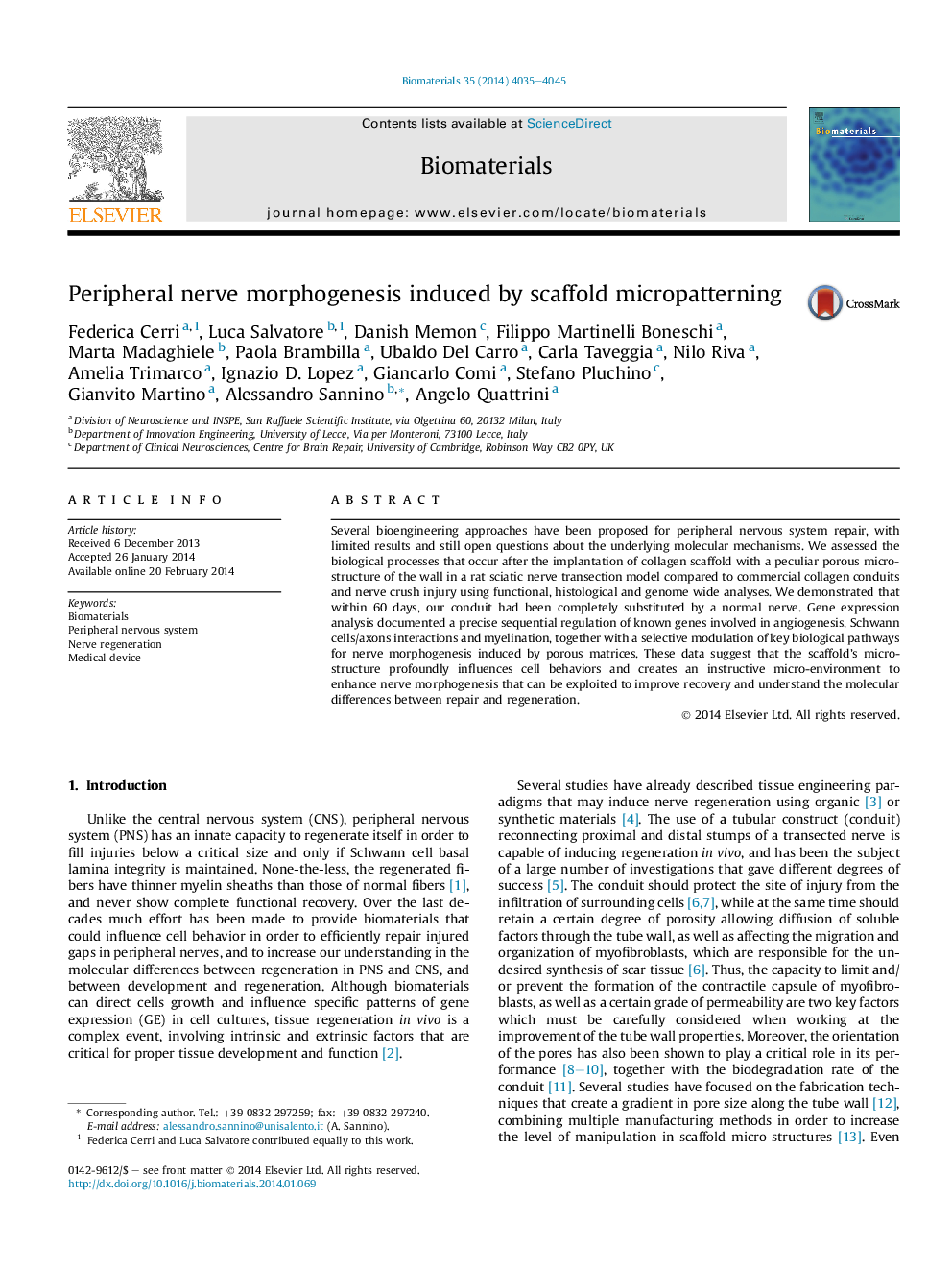| Article ID | Journal | Published Year | Pages | File Type |
|---|---|---|---|---|
| 10228040 | Biomaterials | 2014 | 11 Pages |
Abstract
Several bioengineering approaches have been proposed for peripheral nervous system repair, with limited results and still open questions about the underlying molecular mechanisms. We assessed the biological processes that occur after the implantation of collagen scaffold with a peculiar porous micro-structure of the wall in a rat sciatic nerve transection model compared to commercial collagen conduits and nerve crush injury using functional, histological and genome wide analyses. We demonstrated that within 60 days, our conduit had been completely substituted by a normal nerve. Gene expression analysis documented a precise sequential regulation of known genes involved in angiogenesis, Schwann cells/axons interactions and myelination, together with a selective modulation of key biological pathways for nerve morphogenesis induced by porous matrices. These data suggest that the scaffold's micro-structure profoundly influences cell behaviors and creates an instructive micro-environment to enhance nerve morphogenesis that can be exploited to improve recovery and understand the molecular differences between repair and regeneration.
Related Topics
Physical Sciences and Engineering
Chemical Engineering
Bioengineering
Authors
Federica Cerri, Luca Salvatore, Danish Memon, Filippo Martinelli Boneschi, Marta Madaghiele, Paola Brambilla, Ubaldo Del Carro, Carla Taveggia, Nilo Riva, Amelia Trimarco, Ignazio D. Lopez, Giancarlo Comi, Stefano Pluchino, Gianvito Martino,
